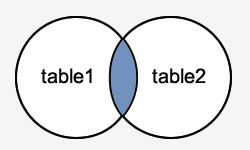SQL Server: Procedures
Learn how to create and drop procedures in SQL Server (Transact-SQL) with syntax and examples.
What is a procedure in SQL Server?
In SQL Server, a procedure is a stored program that you can pass parameters into. It does not return a value like a function does. However, it can return a success/failure status to the procedure that called it.
Create Procedure
You can create your own stored procedures in SQL Server (Transact-SQL). Let's take a closer look.
Syntax
The syntax to create a stored procedure in SQL Server (Transact-SQL) is:
CREATE { PROCEDURE | PROC } [schema_name.]procedure_name
[ @parameter [type_schema_name.] datatype
[ VARYING ] [ = default ] [ OUT | OUTPUT | READONLY ]
, @parameter [type_schema_name.] datatype
[ VARYING ] [ = default ] [ OUT | OUTPUT | READONLY ] ]
[ WITH { ENCRYPTION | RECOMPILE | EXECUTE AS Clause } ]
[ FOR REPLICATION ]
AS
BEGIN
[declaration_section]
executable_section
END;- schema_name
- The name of the schema that owns the stored procedure.
- procedure_name
- The name to assign to this procedure in SQL Server.
- @parameter
- One or more parameters passed into the procedure.
- type_schema_name
- The schema that owns the data type, if applicable.
- datatype
- The data type for @parameter.
- VARYING
- It is specified for cursor parameters when the result set is an output parameter.
- default
- The default value to assign to @parameter.
- OUT
- It means that @parameter is an output parameter.
- OUTPUT
- It means that @parameter is an output parameter.
- READONLY
- It means that @parameter can not be overwritten by the stored procedure.
- ENCRYPTION
- It means that the source for the stored procedure will not be stored as plain text in the system views in SQL Server.
- RECOMPILE
- It means that a query plan will not be cached for this stored procedure.
- EXECUTE AS clause
- It sets the security context to execute the stored procedure.
- FOR REPLICATION
- It means that the stored procedure is executed only during replication.
Example
Let's look at an example of how to create a stored procedure in SQL Server (Transact-SQL).
The following is a simple example of a procedure:
CREATE PROCEDURE FindSite
@site_name VARCHAR(50) OUT
AS
BEGIN
DECLARE @site_id INT;
SET @site_id = 8;
IF @site_id < 10
SET @site_name = 'TechOnTheNet.com';
ELSE
SET @site_name = 'CheckYourMath.com';
END;This procedure is called FindSite. It has one parameter called @site_name which is an output parameter that gets updated based on the variable @site_id.
You could then reference the new stored procedure called FindSite as follows:
USE [test] GO DECLARE @site_name varchar(50); EXEC FindSite @site_name OUT; PRINT @site_name; GO
Drop Procedure
Once you have created your procedure in SQL Server (Transact-SQL), you might find that you need to remove it from the database.
Syntax
The syntax to a drop a stored procedure in SQL Server (Transact-SQL) is:
DROP PROCEDURE procedure_name;
- procedure_name
- The name of the stored procedure that you wish to drop.
Example
Let's look at an example of how to drop a stored procedure in SQL Server.
For example:
DROP PROCEDURE FindSite;
This DROP PROCEDURE example would drop the stored procedure called FindSite.

No comments:
Post a Comment